It’s hard to find a Valentine’s picture book that is perfect for the art room. The story has to resonate with many age groups and the illustrations need to be inspiring, and have the potential to introduce and explore art techniques.
And it helps if the author and illustrator duo is a classroom teacher’s favorite!
This little love ducky has his arms (wings) full of artsy love and I’ll show you how to do it.
WHAT YOU’LL NEED:
For the duck:
– 12″ x 18″ white all-purpose paper
– Black oil pastel or crayon
– Cake tempera paints or watercolor paints (yellow & orange)
For the hearts:
– Small squares (4″ x 4″) of watercolor paper, white all-purpose paper and colored paper
– Watercolor paints
– Crayons or oil pastel
– Colored or craft paper
– Glue stick
– Scissors
– Glitter (optional)
– Cardboard for heart template (cereal boxes are great to use)
DRAWING THE DUCK
Fold paper in half and draw two dots for the eyes on either side of the fold, close to the top of the paper.
Draw a shallow letter U under the eyes and wide bill, then draw the lower duck bill.
Add two sets of wings with top feather curved to look like a finger (so mister duck can hold his hearts).
Draw two feet on either side of the fold line.
Connect the “finger” with a set of wings that connect with the feet. Repeat on the other side.
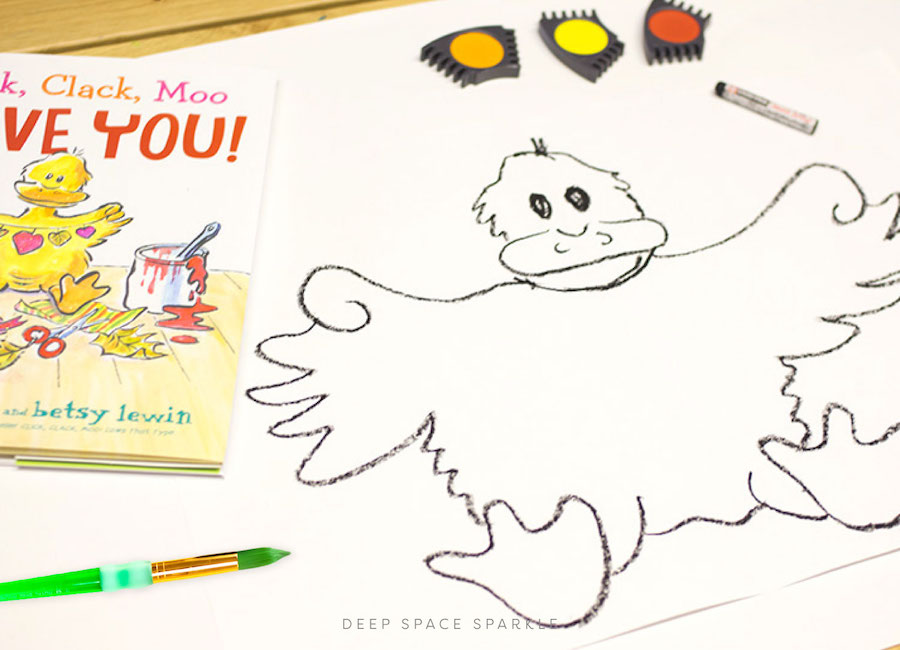
PAINTING THE CLICK, CLACK, MOO DUCK
Fill in the duck with cake tempera paint.
Lay down the first layer with a bright yellow then add some orange around the sides of the duck and feet.
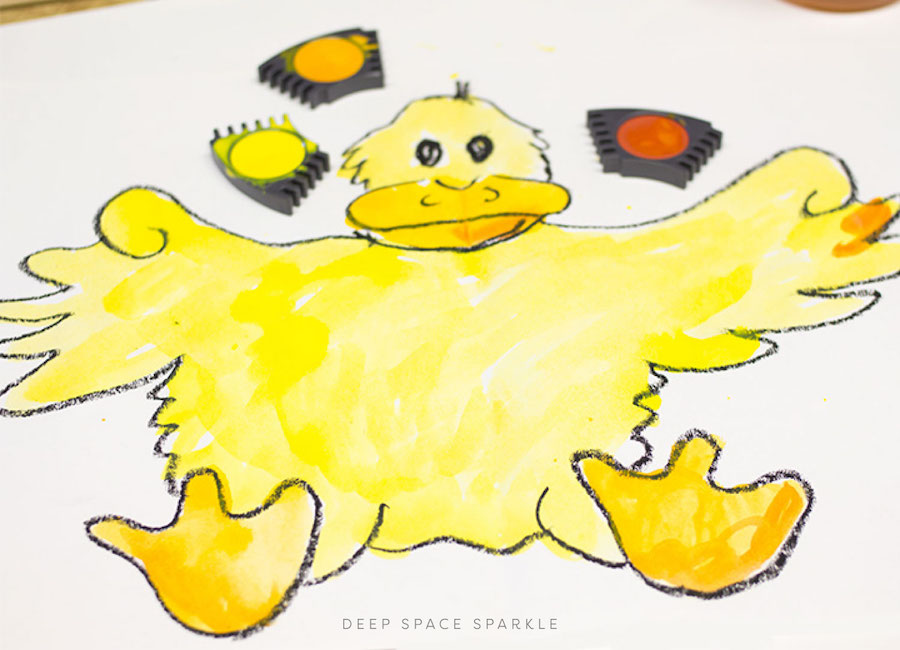
MAKING THE HEARTS
Draw a simple heart on the backside of a cereal box or sturdy cardboard. Each child should have access to a heart template but sharing is fine.
Trace 3-4 hearts on a piece of watercolor paper, colored paper, etc. Each artist can decide what type of designs, paint or patterns he would like to add.
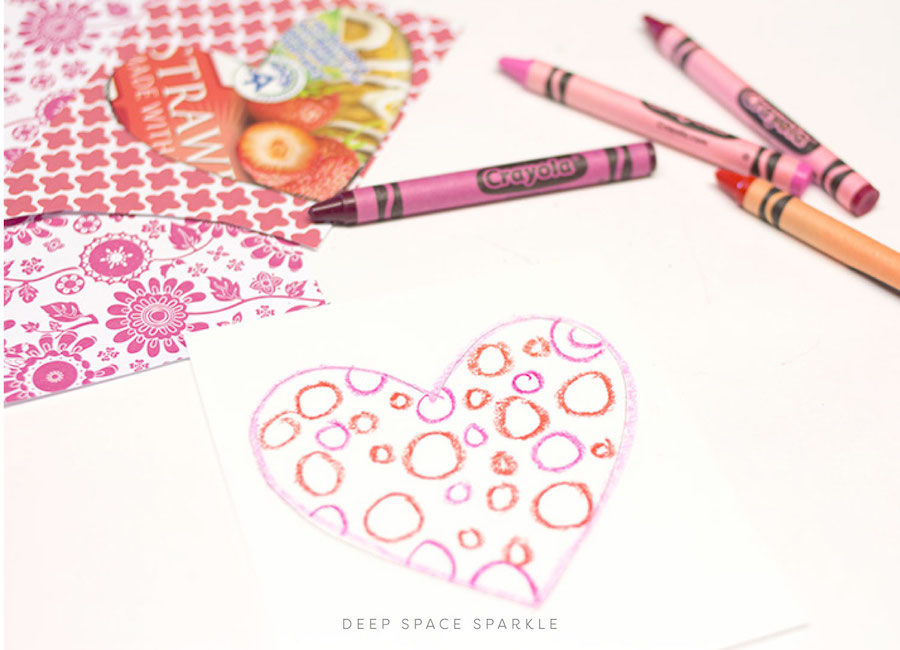
WATERCOLOR PAPER
Cut the watercolor paper into small rectangles that are approximately 4” x 4”.
Use a heart template and pencil to trace the heart onto the watercolor paper. TIP: Use pre-cut hearts for children ages 5 and below.
Using a gold metallic Sharpie pen (for older kids) or metallic oil pastel (for younger kids), draw a series of concentric hearts by starting in the middle and expanding outwards.
Another option besides that, is to draw dots inside circles and fill the space with the circles.
Using liquid watercolors for little kids or pan watercolors for older kids, fill in as many positive shapes as you want.
Younger children can paint directly over the oil pastel lines, and allow the paint to mingle.
TISSUE PAPER HEARTS
Use a heart template and pencil to trace the heart onto the watercolor paper. TIP: Use pre-cut hearts for children ages 5 and below.
Place a tray of tissue paper on each table. It’s helpful to cut the tissue paper into small squares but kids can do this themselves, too.
Paint a layer of Mod-Podge (or watered down glue) on the heart and lay tissue paper on top. Then, brush over tissue paper with Mod Podge.
After heart has been covered with tissue, sprinkle glitter if desired.
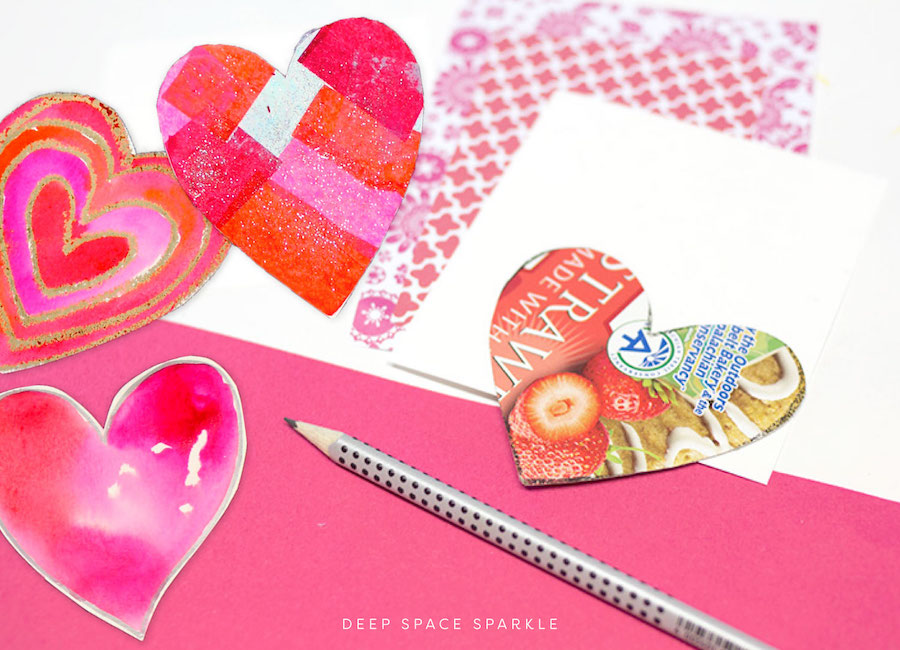
PUTTING IT ALL TOGETHER
Draw a line from one wing “finger” to the other. This is the string that will hold the hearts.
Glue hearts over the string.
Add bow ties at the end of the string.
Optional Step: Paint the background or leave white.
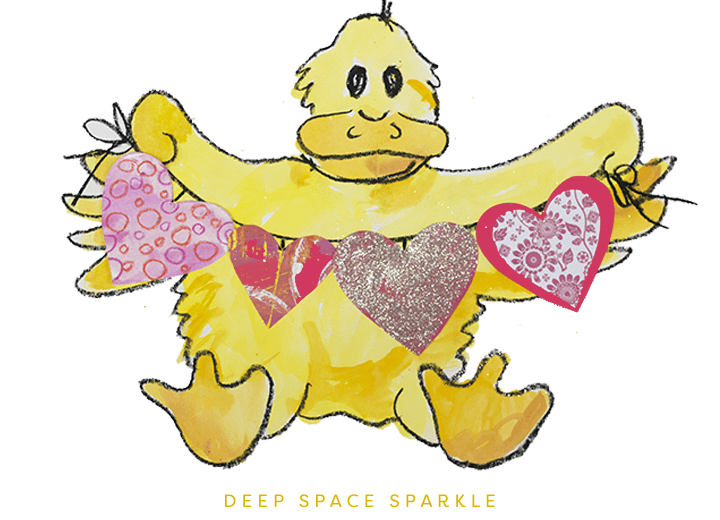
Would you like a few art project handout of the Click, Clack, Moo, I Love You lesson?
Click the yellow button in the box below:
For more Valentines Day art activities for your classroom of children or kids art home, click HERE.

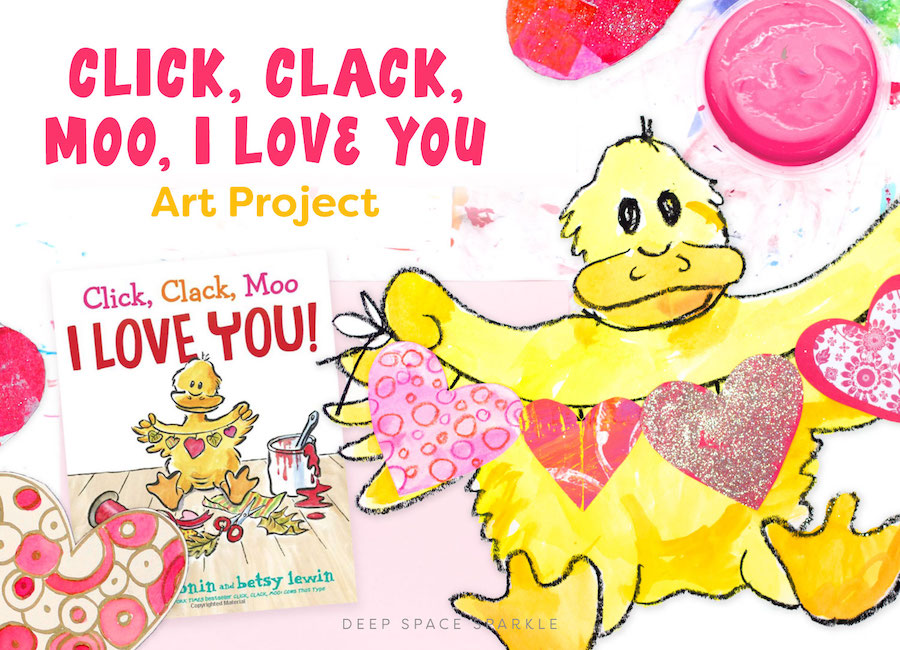











Darling!
This is adorable!! Thank you for sharing!!
Great resources !
I still can’t log into my account, it is on hold even though I have a receipt for my yearly membership which was paid early Jan. Please email me ASAP and let me know what is wrong as I need to plan lessons. Contact link does not work. Jenny
Thanks Jennifer Brown
Hi!
Please contact support@deepspacesparkle.com. They’ll help you with your account 🙂
Freebie
freebie
freebie
We do homeschool. I was searching for art classes that I could do at home. I am not a trained art teacher and these projects are so valuable to us as we get to explore these art techniques. Thank you for sharing them.